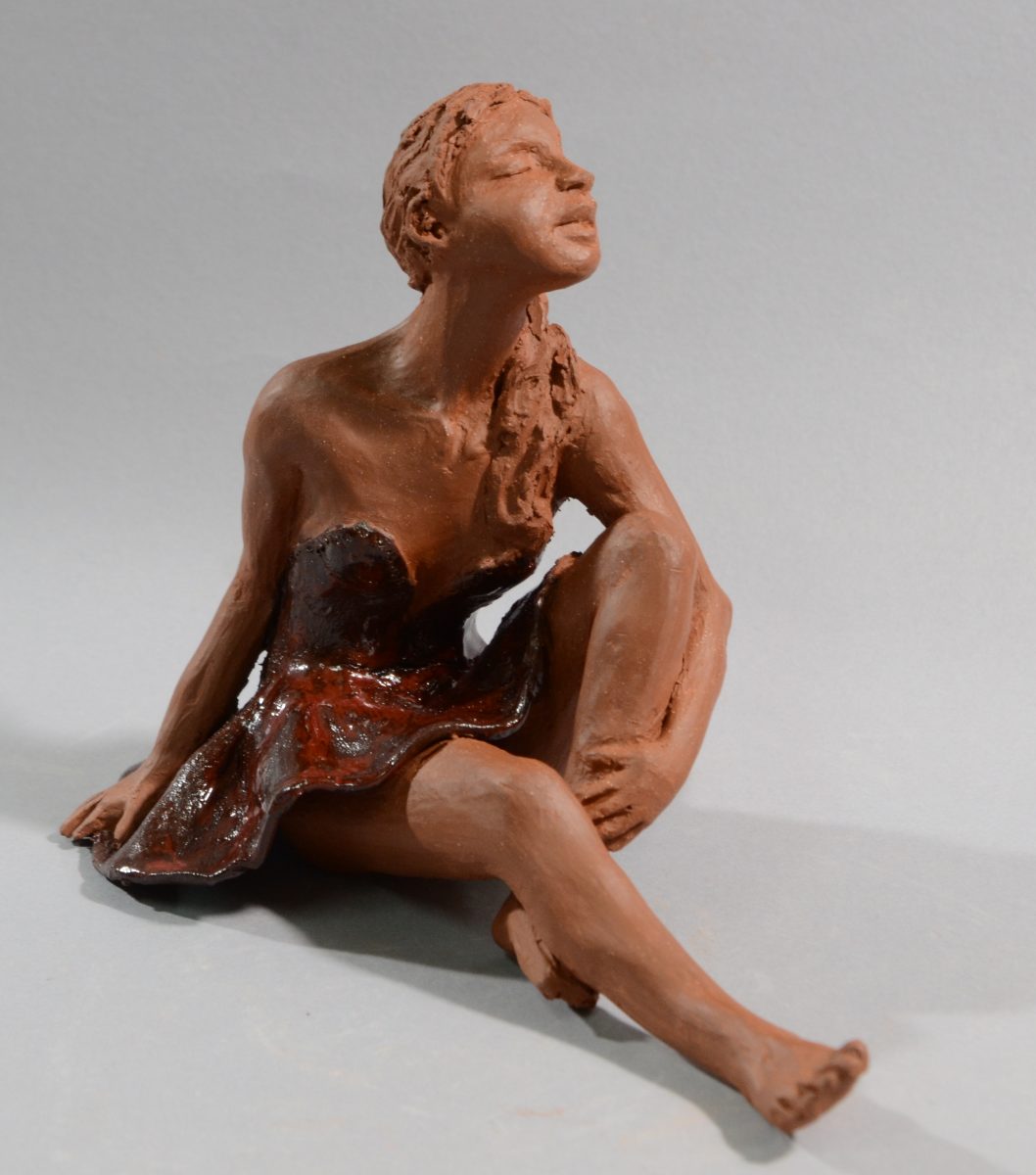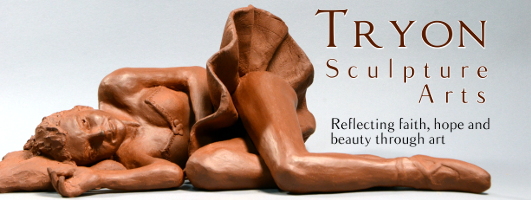
Her thoughts dwell deep within her, timeless and intimate
When I create a title for a figure sculpture I am working on, I have developed a practice of spending time sitting with the sculpture, letting the sculpture itself tell me what its name is. Sometimes the name which emerges from this time is surprising, and not always in line with whatever original concept I may have had when I began the sculpture.
The sculptures themselves often grow out of a rather loosely defined idea or picture I may have in my head. Due to the malleable nature of the clay, a figure can go through several experimental stages as I move the pose around to see what position creates the greatest sense of movement and balance, or just resonates with something in me.
I often create figures with their eyes closed. Sometimes it’s because sculpting eyes, especially on smaller figures, can be difficult — especially getting them to match in the direction of their gaze. The eyes in a figure carry a great deal of the feeling or emotion of the figure, whether he or she is standing in defiance, peacefully, or looking up into the sky to see the sunshine. The eyes define the “gaze” of the figure — whether or not the figure is looking back at and interacting with the observer.
However, closed eyes on a figure often create the feeling of being turned inwards. We can see a figure with closed eyes as contemplative, thoughtful, even at peace with themselves and the world around them. Or, the closed eyes can communicate a troubled feeling, sheltering within their own thoughts.
As I sat with this particular figure sculpture, I let her body language — her slight lean forward, with her arm supporting the one drawn up leg — speak. She is leaning her head back, her body relaxed, almost as if she were remembering a time spent with a dear friend. I could feel the intimacy of her thoughts, and the almost sacred space created by those memories. The imagination steps outside of time and space and brings us to a place where they cease to exist.
Her thoughts dwell deep within her, timeless and intimate.
